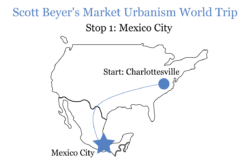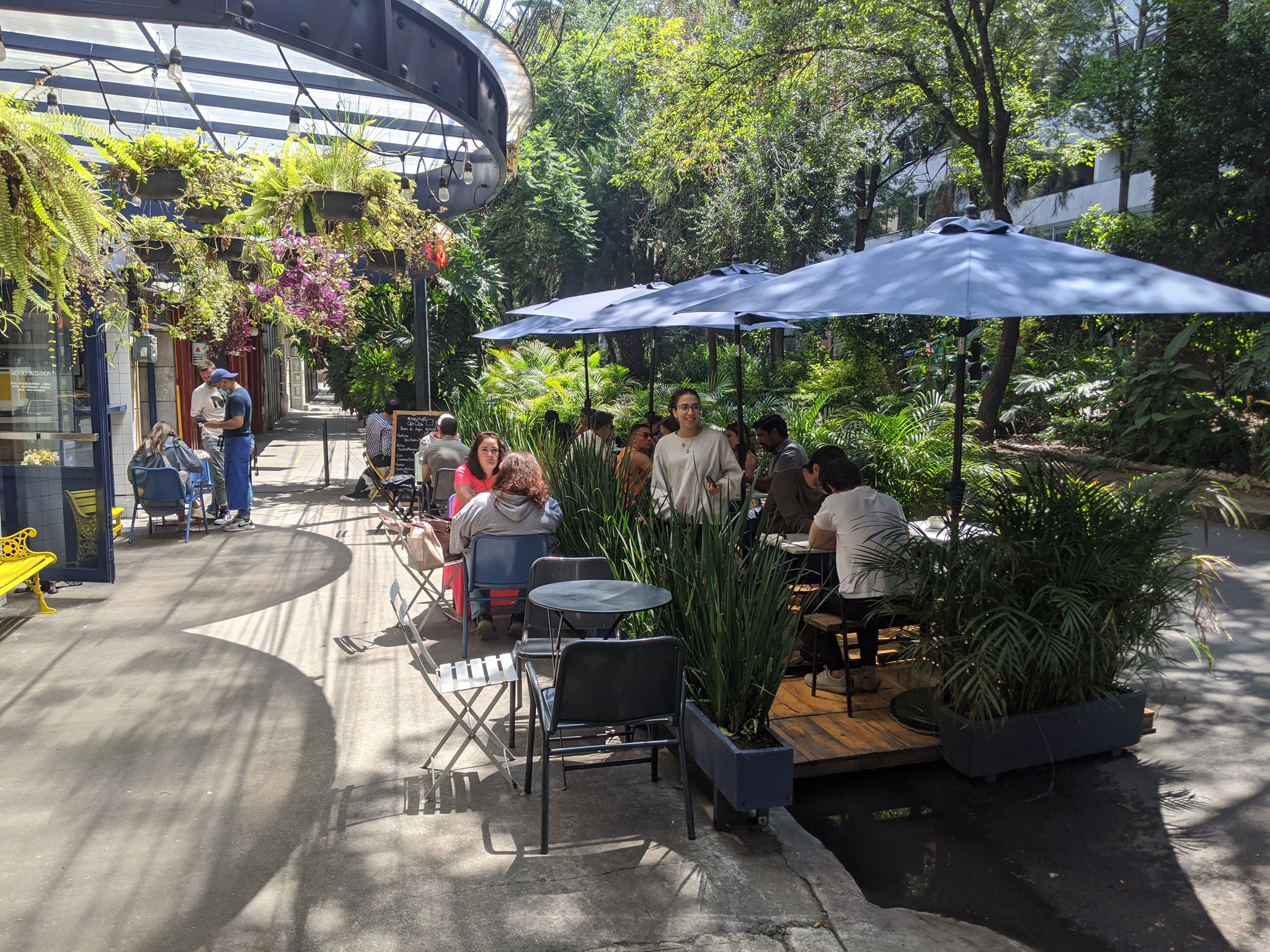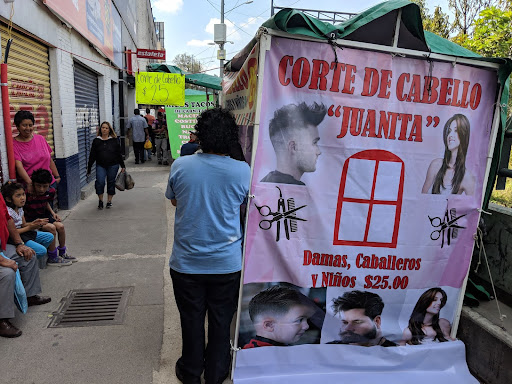Latin American Cities Are Underrated
It's clear why many with the option to work remotely are choosing Mexico City as their new home
What if I told you there was a global region full of cities that were exciting, well-designed, culturally-interesting … and had a fraction of urban America’s living costs? If you were a city-lover paying obscene rents in New York or Boston, you’d perk up. Of course, lots of people pay premiums for this “urban experience” in the U.S., many of them young, working remotely, and without stable careers. They’re exactly the types that I’ve encouraged to consider Latin America, having spent 5 months there on my Global South tour. A top candidate to consider, given its proximity and quality-of-life, is Mexico City.
Known colloquially as CDMX, this is North America’s most populous city, one of its densest, and without doubt its most underrated. Already it’s drawing expats; a CNN report even noted the gentrification that foreigners are causing in select neighborhoods. While these concerns are overblown, it does show how CDMX is overcoming reputational knocks to develop a “lifestyle brand” akin to top U.S. and Canadian megacities.
The knocks against CDMX include crime, traffic and smog, all of which remain problems. But these problems are largely insulated from nicer areas and don’t negate from CDMX’s overall dynamism.

This dynamism compelled me to start my Global South tour in CDMX, staying in the Roma Norte area. One notable aspect of that neighborhood (and others that are popular to expats, such as Condesa and Polanco) are the streets. They’re pedestrian-oriented, with boulevards, parks, public art, multi-modal road design and small-scale commerce. But what set them apart from other upscale North American neighborhoods was the greenery. The CDMX government—along with local businesses—have done a great job of leveraging the local climate and botany to create a lush, tropical setting.

I saw more neighborhoods like this once traveling further down into Latin America, enough that I created a term for them: barrios tropicales. There’s enough in the region that I’ll dedicate a whole article to them; but in contrast there are no barrios tropicales in the U.S., due partly to climate differences, but also from lack of commitment to beautifying public realms.
Another interesting aspect of CDMX streets—even more common outside wealthy areas—is all the commerce. Go to large street markets downtown or through any working-class area, and you find a retail bonanza of small-scale entrepreneurs selling every good and service imaginable. There appear to be no regulations against setting up shop anywhere—or at least none that are enforced.

The city also benefits from a robust transit system, taking measures that reduced congestion. Its extensive subway and bus rapid transit systems are vastly used; in the fourth quarter of 2019, the Metro transported 430 million riders. The BRT system benefits from dedicated lanes and fixed station infrastructure, and the result is cheap alternatives to subsidizing ever more highways for single occupant vehicles.
But the network’s also supplemented by private bus services, called peseros. They are run on an owner-operator basis, with drivers charging cheap fares and running smaller vehicles than standard buses, similar to the “jitneys” seen worldwide.
Lastly, there is CDMX’s exciting culture. It turns out having a more hand-off approach to commerce, transit and more creates a broad infectious street energy. The average CDMX block is a study in sensory overload, full of people, businesses, motorbikes, signage, and music bouncing off the walls. You won’t find this vibe anywhere in the highly-standardized U.S.
But the most important point: it’s all much cheaper. Excluding rent, CDMX’s cost of living is around 60% lower than New York City, reports Numbeo. But the real difference comes when factoring in home costs. Median rent in downtown CDMX is $632 for a 1-bedroom apartment and $1,147 for a 3-bedroom—compared, for example, to $2,295 and $4,495 for such properties in Los Angeles. Some single-family homes in Roma are still listed at below $500,000; while in San Francisco’s Pacific Heights, a comparable area, they start at $4 million.
CDMX’s value proposition was summarized recently in this tweet from libertarian writer Jeffrey Tucker:
Quick unprovable impressions from a week in Mexico City:
1. No homelessness
2. No crime or even a hint of threat
3. Prices 1/3 of the US
4. Chill people
5. Perfect weather
6. Expats there are over-the-moon happy
7. Food is healthy and fresh
8. The whole city smells great!— Jeffrey A Tucker (@jeffreyatucker) December 26, 2022
CDMX still has problems. Housing supply remains painfully low relative to demand—a situation which, as with U.S. cities, worsens gentrification. As I noted in the previous post, Mexico’s nationwide home shortage is 800,000 units per year, due largely to restrictive land-use regulations. The shortage is less felt by those earning middle-class U.S. incomes, since the strength of the U.S. dollar makes even nice Mexican areas seem reasonably-priced. But for everyday Mexican residents, it means overcrowded, substandard living conditions and long commutes.
Likewise, the city continues to struggle with crime (although it has declined substantially). Nationwide, Mexico’s longstanding kidnapping epidemic exceeds any other Latin American country besides Brazil. But this is another problem from which wealthy areas like Roma and Condesa are largely insulated.
Overall, Mexico City’s mix of exciting lifestyle at low prices makes it attractive for remote workers, digital nomads, and anyone who might want to become (temporarily or permanently) a U.S. expat. And most of Latin America is like this: from Guatemala City to Buenos Aires and points between, one can buy homes in the nicest neighborhoods on earth, often for well under the U.S. median home price.
At a time when the U.S. itself deals with inflation and home shortages, it may be worth overlooking Latin America’s negative stereotypes and taking that U.S. dollar down there. Some expats already are, but overall these cities remain a well-kept, underrated secret.
All images credited to Scott Beyer and The Market Urbanist.
Catalyst articles by Scott Beyer | Full Biography and Publications
